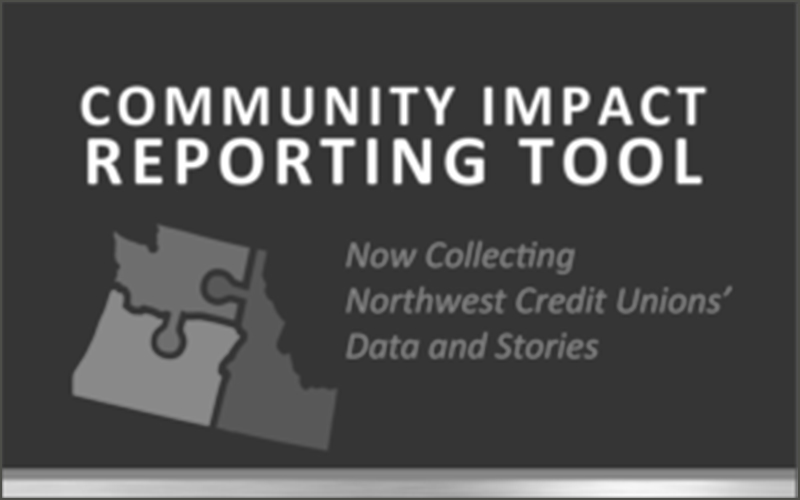Foundation News
You Hold the Keys to Proving Credit Unions’ Positive Impact
Posted by Ben Shuey on May 12, 2021

5/11/2021
Credit unions’ community impact may be the most important thing that differentiates them from other financial institutions. With their not-for-profit, cooperative structure, they are built to serve communities, and they do so — every day. But there is work to be done proving their collective impact.
When impact is documented, collectively and at the individual credit union level, the needle moves.
“Data is proven to be powerful passing legislation and fending off unnecessary regulation,” said Jennifer Wagner, EVP and Chief Advocacy Officer at NWCUA. “Community impact data can also motivate people to join credit unions when they see values that align with their own beliefs.”
The NWCUA Community Impact Reporting Tool (CIRT) was developed with credit union input and is the only tool of its kind in the Movement. CIRT data released this year found that in 2019, credit unions in Idaho, Oregon, and Washington offered free financial education to 207,000 students, funded $1 billion in first-time homebuyer loans, and contributed 180,000 hours of volunteer community service. During the first six months of the COVID-19 pandemic, CIRT documented that credit unions helped their members cope with the economic fallout by waiving nearly $14 million in fees.
These are services legislators and regulators are known to care about, and they often request data supporting credit unions’ service mission.
The CIRT survey documenting 2020 impact is open now through June 11.
If your credit union participated in the last survey, you likely already shared the first six months of your 2020 pandemic-related data. Simply input your COVID-19 impact for the rest of the year. The survey will also document special lending, services to rural areas, financial education, charitable contributions, volunteerism, and more.
Bonus: Inputting your impact data is a step toward telling your own credit union’s story.
“It can take time to gather the datapoints and submit stories and photos illustrating them, and your investment in this process truly helps tell the movement’s collective story,” said Christine Ruzzi, AVP, Enterprise Engagement. “It can also make it easier for your credit union to tell its own story. When you complete CIRT, your datapoints, pictures, and story examples will be in one place, and your team can create content to share with your members and community.”
Don’t miss the opportunity for your credit union to be included in the next major impact report. Access the CIRT survey now. Take a few minutes to view this video for tips on how to complete the survey.
Questions about CIRT? Reach out to Christine Ruzzi.
Posted in Community Impact Reporting Tool, Cooperative Development.
